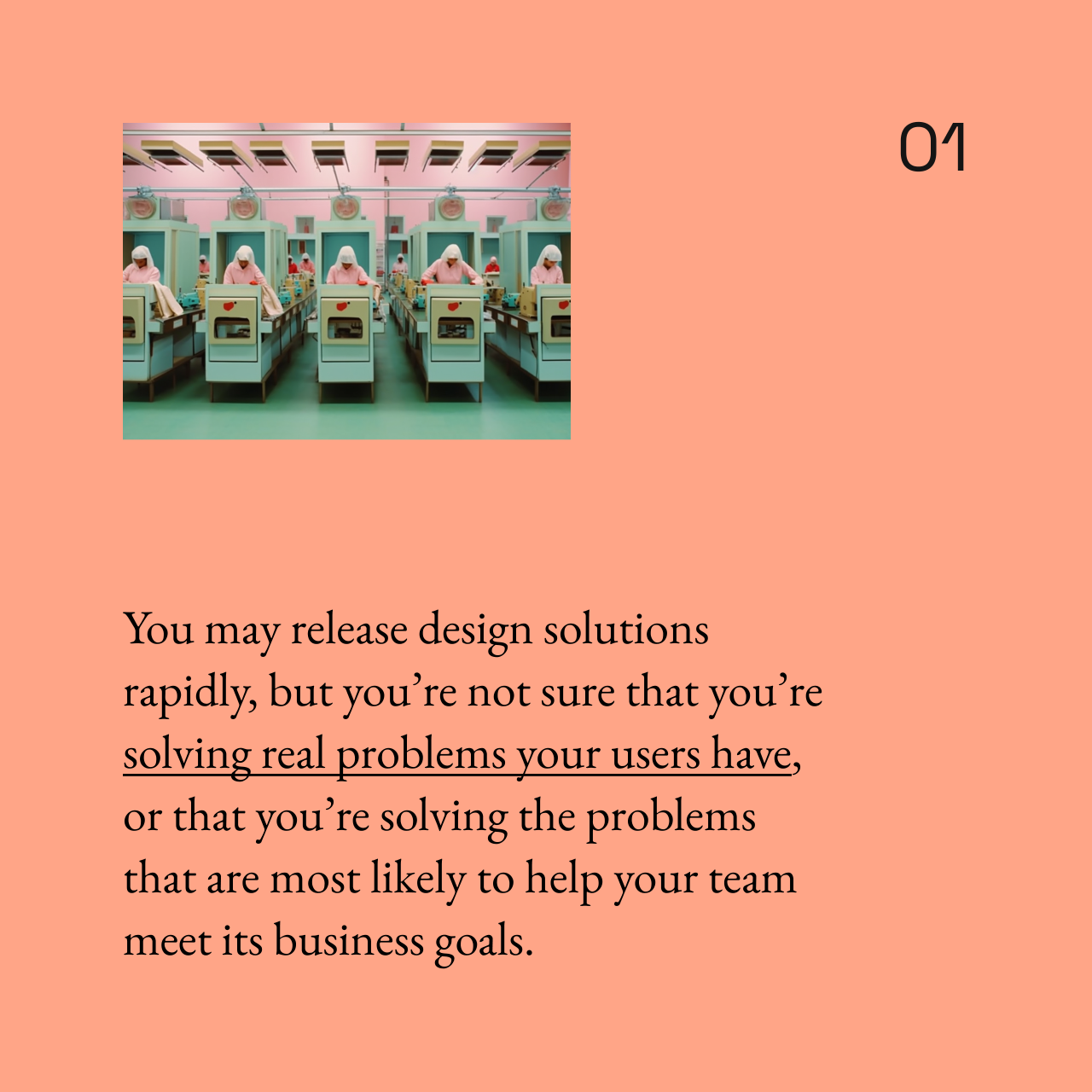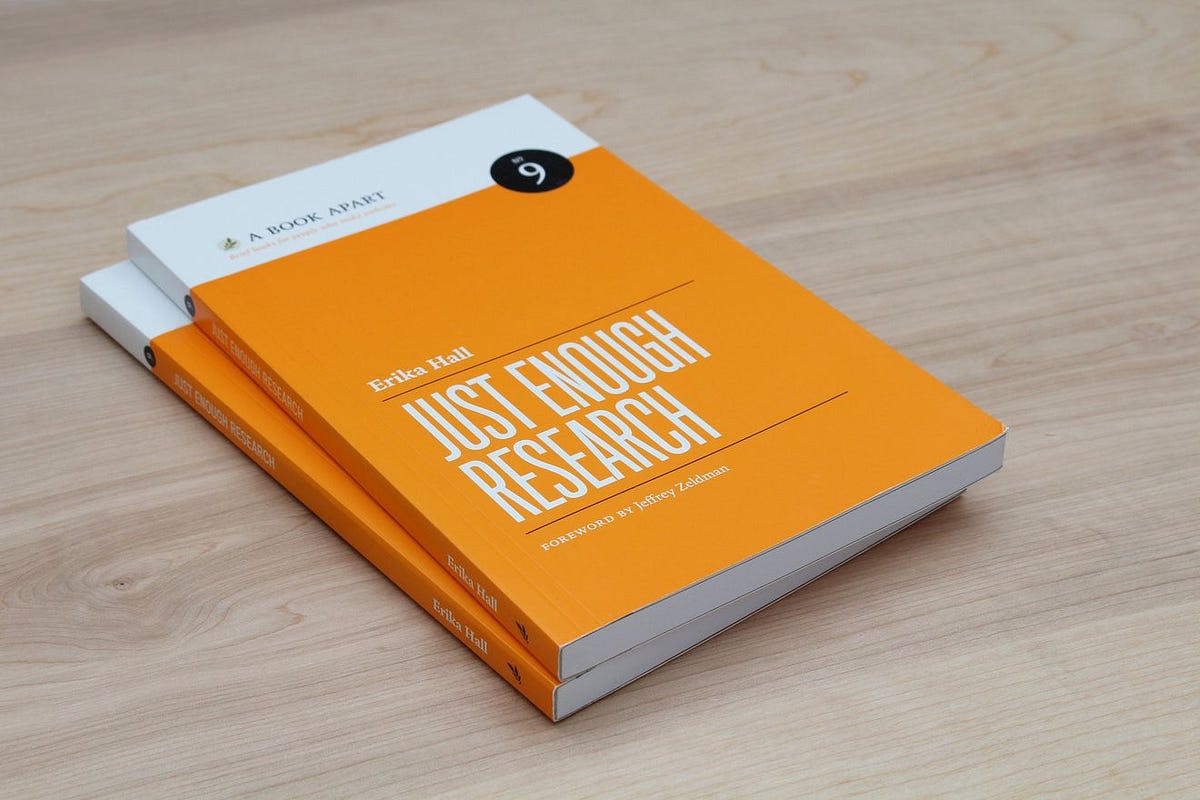Research is part of design—this is how you make time for it

Lightbulb moment.
Use these strategies and tips to ensure UXR becomes entrenched in your design practice and unlock better, more creative solutions.
As a user research lead, I’ve worked closely with designers for quite some time. I’m familiar with the tension between honoring the creative process and meeting tight deadlines in fast-moving business environments.
The designers I’ve worked with have lamented their lack of time to invest in the research and discovery phase of the design process, hounded by the need to produce, produce, produce.
If they’re lucky, their organization has invested in full-time researchers—but if not, research is often done infrequently or not at all.
Let’s take a deep dive into the details of what you, my designer friends, are leaving on the table by not doing UXR—and explore some ways to incorporate research into your process, even when the clock is always ticking.
What’s left on the table when you don’t make time for UXR in the design process?
I’m here with an agenda: I want you to wake up tomorrow morning and be totally fired up about incorporating UXR in your design process, no matter how much time pressure you’re under. Before we address how to do that, let’s review what you’re missing out on if you don’t.
A (non-exhaustive) list of what happens when UXR is excluded from design




Overall, user voice promotes the creativity you need to create extraordinary user experiences and decreases the time between now and when you hit your team’s KPIs—even if you occasionally have to extend some deadlines.
Why fly blind? Why waste time? I know: you’re doing it because you aren’t sure how you and your team could possibly squeeze out any extra time and space for UXR.
Let’s figure that out.
Three ways to buy time for user research in the design process
Use these strategies and tips to ensure UXR becomes entrenched in your design practice—the results will speak for themselves.
1. Evangelize the tangible ROI of UXR to your fellow designers and management
Exactly how you do this depends on your organizational culture, but my recommendation is to start by creating a short presentation that includes the main value propositions of UXR in product design (you can take them directly from the previous section).
Make sure to include examples of past work that would have benefitted from user research.
For example, you can show a feature that took a few releases to hit a main KPI due to UX fumbles and explain how usability testing with 10 to 15 users over a few days could have alerted you to most of these issues even before the first release.
Or perhaps your team worked on a much-anticipated feature or initiative that users didn’t use or pay for. Point it out in your presentation and explain that UXR methodology can enable you to develop very educated hypotheses around whether you’re solving real and important user problems before your organization invests too much in design, development, and marketing resources.
It’s important that you’re short, to the point, and laser-focused on reaching business goals faster by getting less wrong in the first place. Though UXR is a part of honoring the creative process, it’s not likely that management will be as motivated by this fact as you are (though your fellow designers may be, so you can mention it to them!).
Your presentation and conversation should end with a specific ask. From your fellow designers, you may want them to each speak with their direct managers about the importance of making this a priority.

Don’t leave insights on the table.
From management, perhaps you want product leadership to include extra time in product development timelines for generative ideation research before large initiatives and a few extra days for usability testing pre-release. Think about what makes sense for your organization and your internal processes. After you’ve made your case, make the ask.
2. Start today with the user voice information that you have from other teams
While you’re advocating for the inclusion of UXR in the design process, start building systems for using the information you already have from users internally.
For example, many of you work at companies with customer support, sales, or account management teams. Meet with the relevant stakeholders to learn where and how they record user feedback so that you can figure out what’s relevant to you and utilize it regularly.
If your organization has product marketing managers or social media managers, they’re also often an excellent source for user feedback—both on your product and the space you’re in generally.
PMMs often know what your competitors are up to, and social media managers may know what your target audience is really struggling with based on what they’re venting about on social.
Set some meetings, inform yourself, and figure out how to keep yourself and other designers informed on a regular basis.
3. Get all of the designers together to slice and dice time and effort for research
Hopefully, your evangelizing will make an impression on management, and UXR will be a regular and official part of your internal design processes. Here’s the thing: you don’t have to sit around and wait for that to happen if you pool resources from your whole design team.
Get a group of designers together and divvy things up. It’s unlikely that any one designer has a full day a week they can devote to research if it isn’t already part of your design culture—but most motivated designers can find an hour or two per week to get started.
Maybe one designer will commit to meeting once weekly with the support team, and another will have a bi-weekly sync with the relevant marketing people.
Another designer who’s experienced with usability testing can research usability platforms and get quotes to approach management with.
A few designers may want to do weekly usability sessions with users on Zoom for key projects. Someone else could do one-to-two exploratory user interviews each week on topics related to key initiatives that aren’t being designed yet, looking at things like user pain points, motivations, and behavior.
These are examples, but the point is that if most of your designers give just a little bit of time, you can start getting significant user input even before management helps you reorganize internal processes to make room for it.
What if you don’t have basic user research skills?
Here’s the good news: if you’re a designer, while you may need to hone specific skills, you’re already ahead of the game because you’re engaging in design thinking every day.
At its core, UXR is a function of design thinking. You’re in the habit of uncovering problems and opportunities, designing solutions, testing, and repeating—and that will serve you well as you plunge headfirst into user research.
Consider taking a course
A simple search will yield a ton of credible courses from design institutions you trust—use your organization’s professional development budget. Consider looking for more tactical rather than theoretical courses that will have you hitting the ground running sooner.
Here is a list of course topics that may be helpful:
If you don’t have a specific course budget, you’ll be shocked at how much you can find for free. Just make sure you look at who created a specific video or article and that they have the necessary expertise.
Read a book
To my knowledge, only one book out there will qualify you to start dipping your toes in user research immediately after reading it—Just Enough Research by Erika Hall. She covers which methods to use, when, and a range of best practices for each.
You’re welcome.

Erika Hall’s Just Enough Research.
Get a mentor or do a skills exchange
Perhaps a full-time user researcher in your network is willing to mentor you or teach you some research skills in exchange for some Figma lessons.
Get creative with the people you’re connected to.
In my experience, the design community has total awareness of why they need real user insights to do their best work—but many individual designers feel forced to put it on hold due to organizational pacing.
My main message is: don’t settle. Doing your best design work, without a doubt, means committing to making some level of UXR a part of your process.
Subscribe to Outlier
Juicy, inspiring content for product-obsessed people. Brought to you by Dovetail.